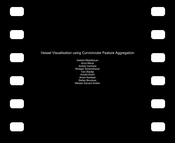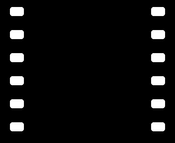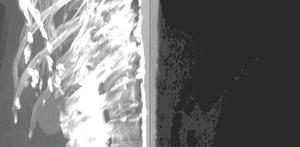Information
- Publication Type: Journal Paper with Conference Talk
- Workgroup(s)/Project(s):
- Date: June 2013
- Journal: Computer Graphics Forum
- Volume: 32
- Number: 3
- Location: Leipzig, Germany
- Lecturer: Gabriel Mistelbauer
- Event: Eurographics Conference on Visualization (EuroVis)
- Conference date: 17. June 2013 – 21. June 2013
- Pages: 231 – 240
Abstract
Radiological investigations are common medical practice for the diagnosis of peripheral vascular diseases. Existing visualization methods such as Curved Planar Reformation (CPR) depict calcifications on vessel walls to determine if blood is still able to flow. While it is possible with conventional CPR methods to examine the whole vessel lumen by rotating around the centerline of a vessel, we propose Curvicircular Feature Aggregation (CFA), which aggregates these rotated images into a single view. By eliminating the need for rotation, vessels can be investigated by inspecting only one image. This method can be used as a guidance and visual analysis tool for treatment planning. We present applications of this technique in the medical domain and give feedback from radiologists.Additional Files and Images
Additional images and videos
 demo:
Demo video (27 MB).
demo:
Demo video (27 MB).
 fastforward:
Fast forward (16 MB).
fastforward:
Fast forward (16 MB).
Additional files
 paper:
Full paper preprint.
paper:
Full paper preprint.
 questionnaire:
The questionnaire, which was used for our evaluation.
questionnaire:
The questionnaire, which was used for our evaluation.
Weblinks
BibTeX
@article{mistelbauer-2013-cfa,
title = "Vessel Visualization using Curvicircular Feature Aggregation",
author = "Gabriel Mistelbauer and Anca Morar and Andrej Varchola and
R\"{u}diger Schernthaner and Ivan Baclija and Arnold
K\"{o}chl and Armin Kanitsar and Stefan Bruckner and Eduard
Gr\"{o}ller",
year = "2013",
abstract = "Radiological investigations are common medical practice for
the diagnosis of peripheral vascular diseases. Existing
visualization methods such as Curved Planar Reformation
(CPR) depict calcifications on vessel walls to determine if
blood is still able to flow. While it is possible with
conventional CPR methods to examine the whole vessel lumen
by rotating around the centerline of a vessel, we propose
Curvicircular Feature Aggregation (CFA), which aggregates
these rotated images into a single view. By eliminating the
need for rotation, vessels can be investigated by inspecting
only one image. This method can be used as a guidance and
visual analysis tool for treatment planning. We present
applications of this technique in the medical domain and
give feedback from radiologists.",
month = jun,
journal = "Computer Graphics Forum",
volume = "32",
number = "3",
pages = "231--240",
URL = "https://www.cg.tuwien.ac.at/research/publications/2013/mistelbauer-2013-cfa/",
}


